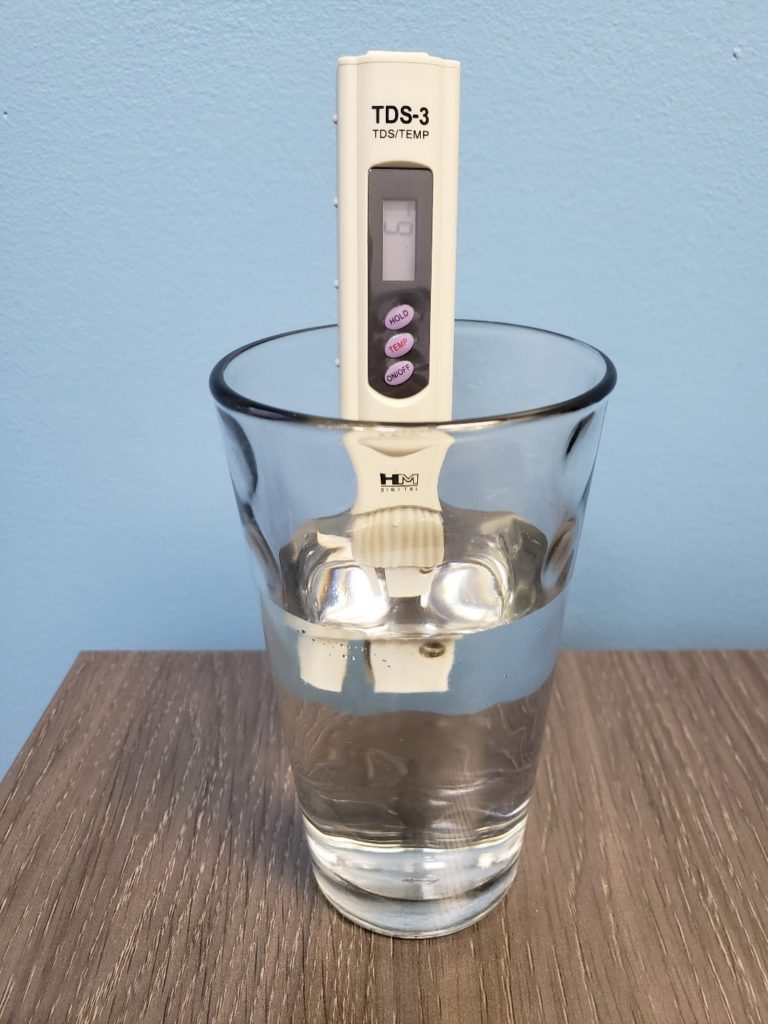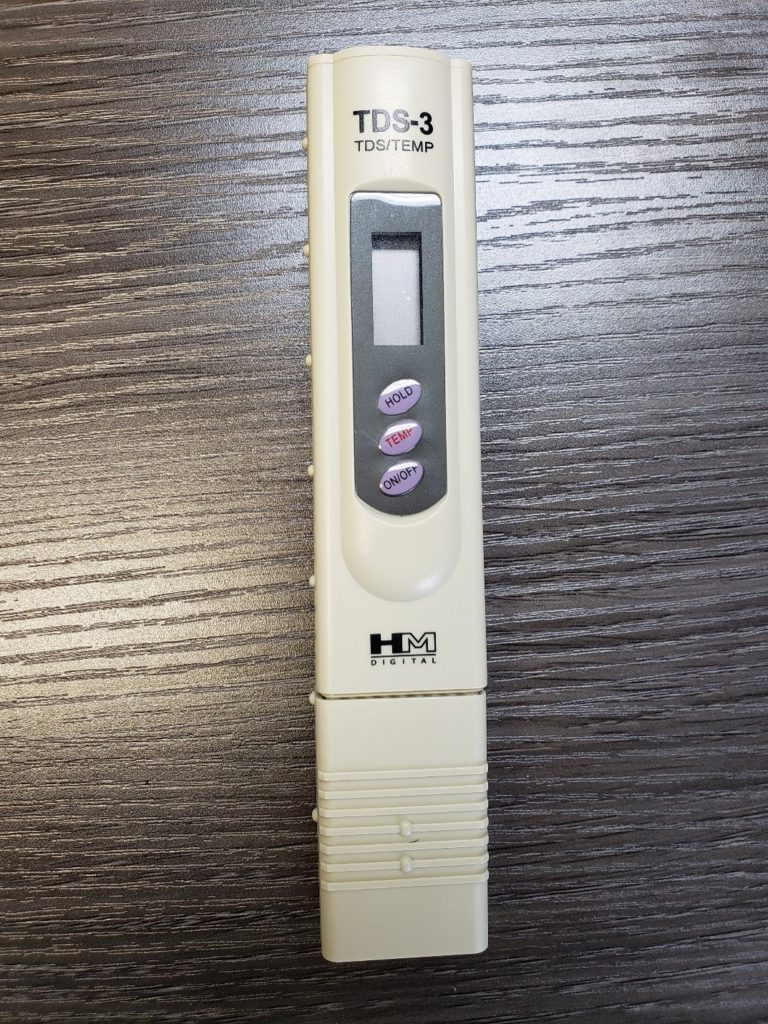When researching water and water treatment systems for your home have you come across TDS? I know, I know, seriously, another acronym! In this Water 101 we are going to simplify TDS. We will explain what TDS stands for, what is measured and how it is measured. Let us dive in!
Water is considered a universal solvent because of its ability to dissolve and absorb molecules from various substances. The number of dissolved particles in a volume of water is called the total dissolved solids (TDS). Total dissolved solids can either be organic or inorganic.

What are types of total dissolved solids?
TDS are essentially a measure of anything dissolved in water that in is not an H2O molecule and can come from just about anywhere, including chemicals used to treat the municipal water supply, runoff from roads and yards, or even home plumbing systems.
Here is a list of common total dissolved solids and examples of sources which they may have come from and may be present in your water.
- Calcium- from rocks, absorbed in water naturally flowing
- Chloride
- Magnesium- from rocks, absorbed in water naturally flowing
- Potassium- from rocks, absorbed in water naturally flowing
- Zinc
- Aluminum
- Copper
- Lead- may come from old plumbing pipes
- Arsenic- naturally occurring
- Iron- naturally occurring
- Chlorine- water treatment plants
- Sodium
- Fluoride
- Bicarbonates
- Sulfates
- Pesticides- agricultural runoff
- Herbicides- agricultural runoff
How is TDS measured?
TDS is measured using a TDS meter, and in PPM (parts per million). According to the EPA secondary drinking water regulations, 500 ppm is recommended maximum amount of TDS for your drinking water. Any measurement higher than 1000 ppm is an unsafe level of TDS. The TDS meter does not indicate what types of TDS are present in the water, just the levels present. If you are interested to knowing exactly what is present in the water, reach out to one of experts for additional information.

Why is it important to measure TDS levels in water?
Measuring TDS helps with better understanding your water quality and how it affects your everyday life. Total dissolved solids can affect your water quality, health and home plumbing systems and even daily tasks such as cooking and cleaning.
- Taste & Smell- tap water with high concentration of total dissolved solids can have a bitter taste and unpleasant smell. When cooking with elevated levels of TDS it can make the taste of food or beverages unpleasant.
- Health- High TDS water is not necessarily unhealthy to drink, but certain substances, such as lead and copper, are health hazards.
- Plumbing, appliances and cleaning- Higher TDS generally indicates hard water, which causes scale build up in pipes and appliances. Scale buildup reduces performance and can create system maintenance costs. When calcium and magnesium salts dissolve, they collect in pipes and form scale buildup, which can result in costly pipe repairs or shorten lifespan of appliances. It can also cause clothes to fade in the wash, buildup in sink, and spots on dishes or shower doors.
How to reduce total dissolved solids in water?
Reverse Osmosis is one of the most complete filter system to remove contaminants. Pressure is used to push unfiltered water through a semipermeable membrane which has small pores that block contaminants such as total dissolved solids, allowing clean water to flow through.
Want more information about reverse osmosis and or total dissolved solids? Our experts are here to help! Contact us or at 763-535-1800.

